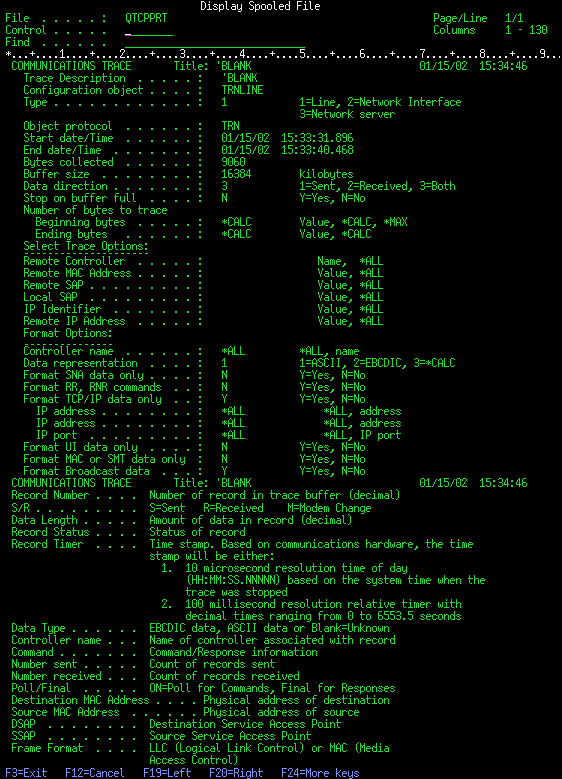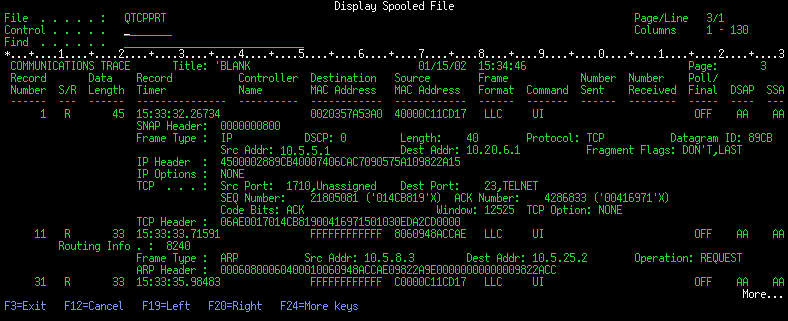The communications trace displays several types of information. The first part of the communications trace summarizes the prompts that you specified when you started the trace, such as the name of the Configuration object. Page down to find a list of items, such as Record Number and S/R, with associated definitions. These items represent titles that are later used to identify sections of the communications trace data. It might be useful to refer back to this list as you read the trace data. This figure shows the preliminary information in a communications trace.

After reading the preliminary information, page down to the actual TCP/IP data in the communications trace. A row of titles, starting with Record Number, identifies each section of the data records. Each record number represents a frame, and it includes information that can help you debug the problem that you are having with TCP/IP on this server or in the associated network.
If you find an asterisk (*) after a record number, for example, 31*, be aware that the asterisk represents missing trace data. This missing trace data appears when communications trace records are dropped. Communications trace data is collected by the input/output processor (IOP). If the communications line is very busy, the IOP prioritizes all the network traffic and gives a higher priority to the data path input/output than to the communications trace information. Under these circumstances, the IOP might drop some of the communications trace records. This can indicate that the IOP is not capable of handling the excessive speeds or traffic on the network.
- Acknowledge that your communications line is busy and that frames will be missing from your communications trace.
- Investigate the traffic on the communications line to determine if there is traffic that can be moved to another line or TCP/IP interface.
This figure shows the TCP/IP data portion of the communications trace.
